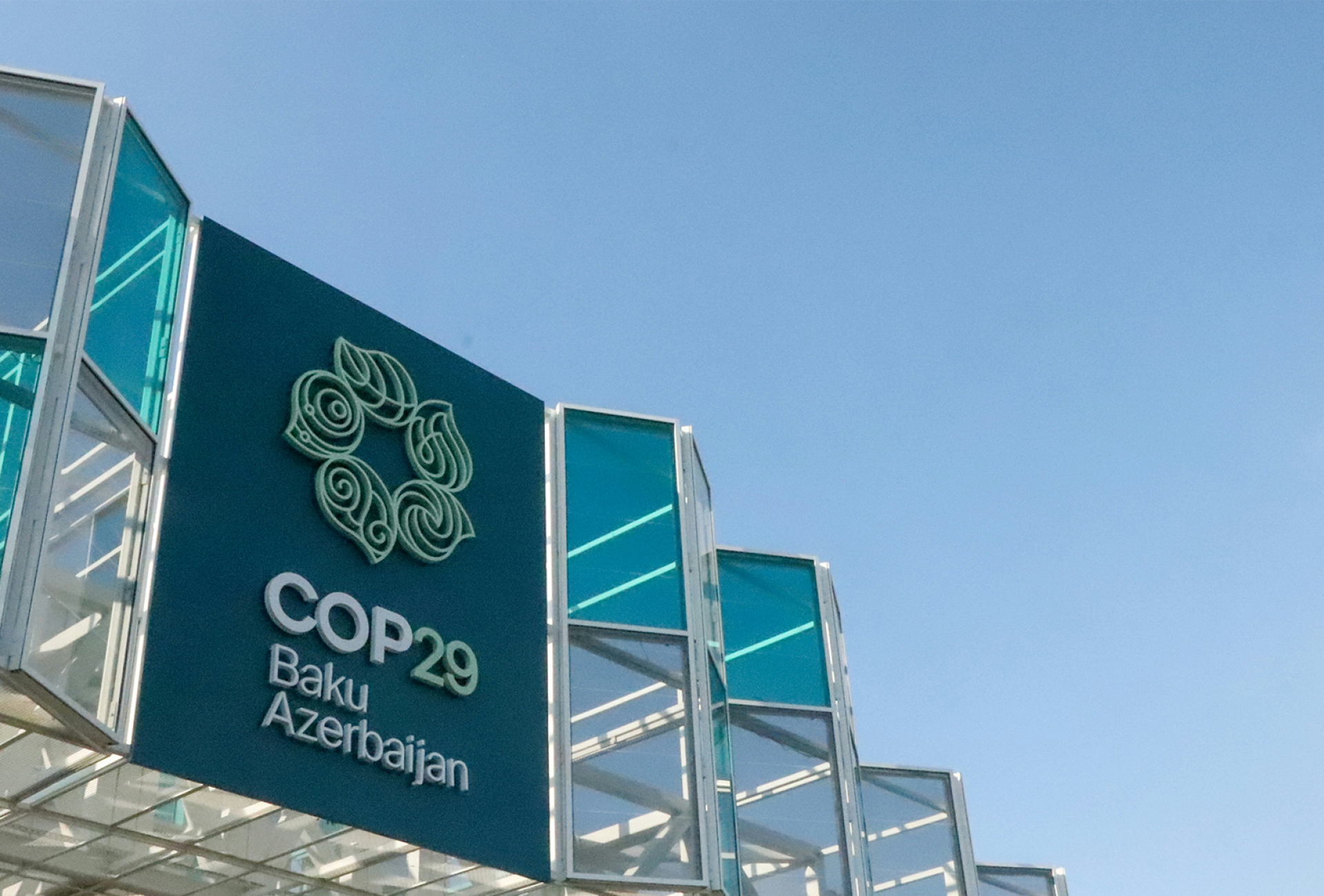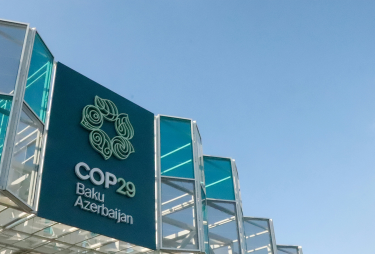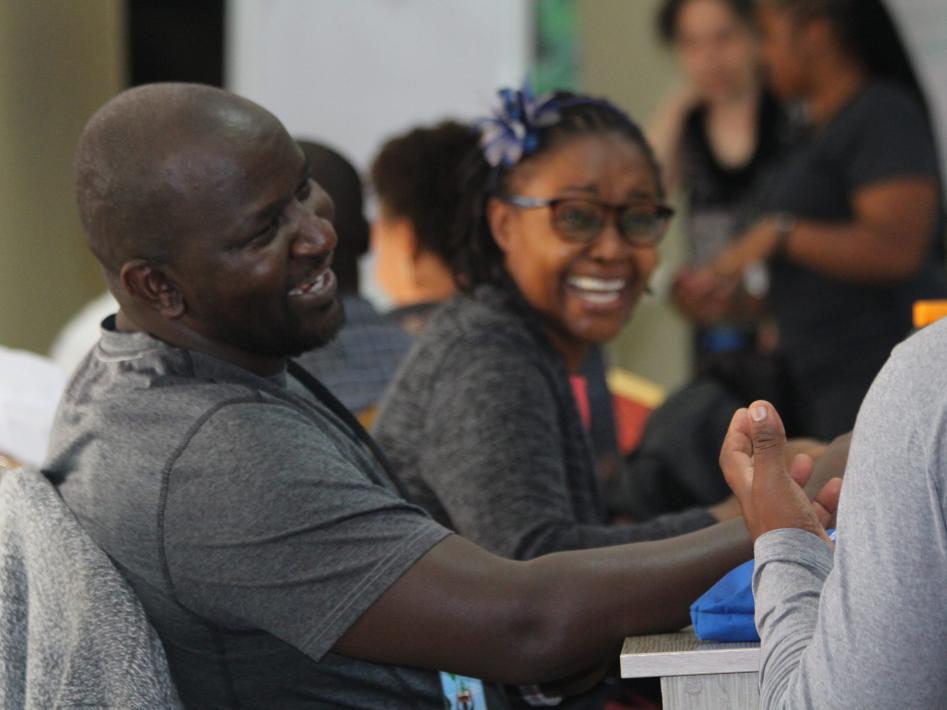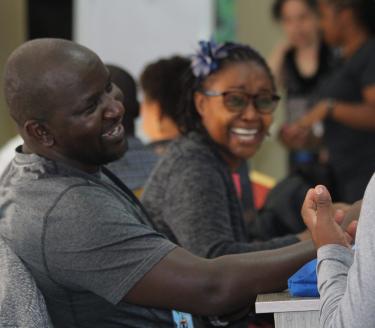When the stories don’t sync


When Petter Jakobsson, theological advisor at the Swedish Mission Council (SMR), traveled to Azerbaijan to participate in COP29, he was met with conflicting images of the state of the earth. He sees the need for religious leaders who contribute to a unified view of the climate crisis.
A climate summit is at the same time a giant anthill and a projection of the entire world. Hundreds of meetings are taking place simultaneously, thousands of voices are trying to make themselves heard, and men and women in well-fitting suits move through long corridors. But also, representatives of indigenous people with feathers in their hair, men and women in various traditional folk costumes. Add to that the occasional figure in a dinosaur costume. The security guards almost outnumber the participants. Behind everything, beyond what we can see, we know that it is old-fashioned power and money that rule. Just like in the world at large.
First, one can think about why climate summits are held in hardline dictatorships. Azerbaijan is also an extremely fossil-dependent country. Perhaps it is easier to monitor security in heavily regulated countries. Perhaps you want to avoid demonstrations and manifestations from increasingly frustrated people who want faster changes.
Like two separate worlds
It is as if there are two very strong stories about how the world is made that live side by side. On the one hand, I meet representatives from island nations who describe how they plan to move in populations from islands that are at risk of being swallowed by the sea. They are aware and prepared. I meet people who have calculated what it will cost to adapt entire countries to rising water levels or increasing storms. I hear about people who carefully describe current and future refugee flows directly linked to climate change and carbon dioxide emissions.
At the same time, I read about multi-billion-dollar agreements being signed regarding fossil gas exports. I read about governments sabotaging negotiations. I read about countries that, in the name of realism, are fighting to preserve the consumption of fossil fuels.
“Too late and too little”
This year’s climate summit is described as a “mid-year”. The big question this year was how rich countries should finance adaptation, transition and compensation for lost values among those who are hardest hit. Who should pay and how much? In the end, we have an agreement that is so vague and so far in the future that no one who signs it now needs to take responsibility. The negotiators, Swedish and others, are satisfied and describe it as a success. Poor countries and civil society say, “too late and too little”. Once again, it is as if there are two different truths at the same time.
Sweden had a nice exhibition space, among hundreds of other “pavilions”. It was mainly about selling Swedish solutions. In it, the climate threat was described almost as a business opportunity. The state secretaries and negotiators were nice and accommodating, but it feels as if Sweden is reaching for something other than the ambitious climate policy we had wanted.
Agreeing on a story about the state of the Earth
SMR participated with a small delegation of member organisations and partners. The purpose was to contribute as a cog in civil society and highlight the importance of religious organisations, but also to make it possible for some member organisations and partner organisations to be on site.
SMR is part of a network of faith-based organisations that the UN agency UNEP brings together. Organisations from all the major religions believe that a holistic view of humans and creation is needed to meet the climate threat. Hope, ethics and love are needed. What are described as soft values are in fact, rock-hard and indispensable values, if we are to be able to pull in the same direction. Religious leaders are needed so that we can agree on a story about the state of the Earth.


Our network
A vibrant network with a long history
Our network began to grow at the Ecumenical Mission Conference in Edinburgh back in 1912. The world has changed since then but our focus on holistic mission gives us a platform to cooperate with a wide range of churches and organisations in our global civil society.

